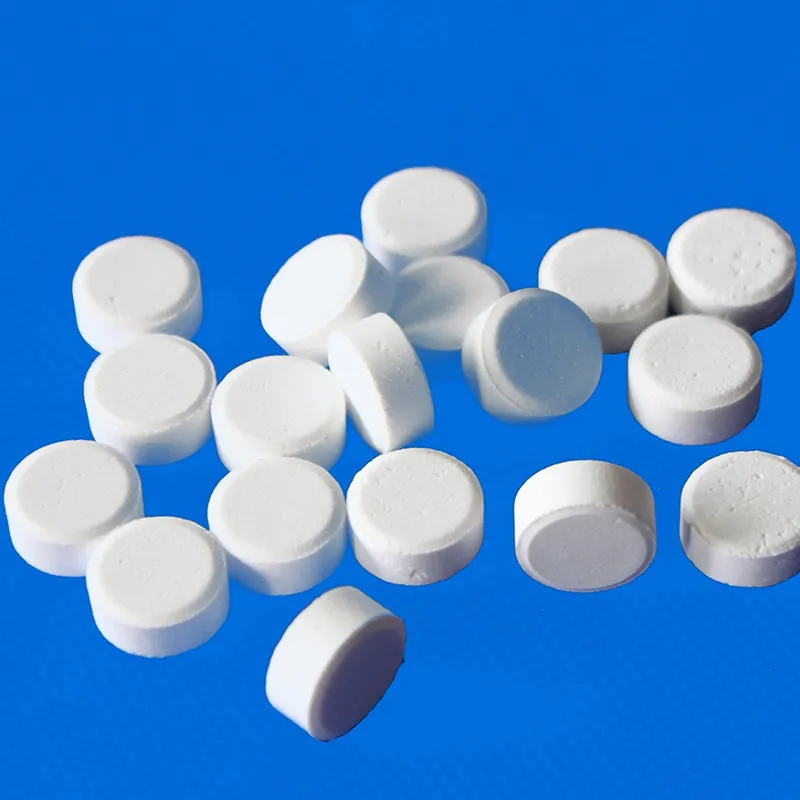
Exploring the Effects of Flour Treatment Agents on Baking Quality and Performance
The Role of Flour Treatment Agents in Modern Baking
In the world of baking, flour is a fundamental ingredient that plays a pivotal role in determining the texture, flavor, and overall quality of baked goods. However, not all flours are created equal. To enhance their performance and achieve superior results, many bakers and manufacturers turn to flour treatment agents. These additives are designed to improve flour's properties, ensuring consistency and quality in various baking applications.
Flour treatment agents encompass a range of substances, including enzymes, oxidizing agents, and emulsifiers. One of the most commonly used agents is potassium bromate, which serves as an oxidizing agent. It strengthens the dough by enhancing gluten development, resulting in improved elasticity and structure. This is particularly important for bread-making, where a well-developed gluten network is essential for capturing gas produced during fermentation.
Another popular flour treatment agent is ascorbic acid, also known as vitamin C
. This natural antioxidant enhances the oxidation process, aiding gluten formation and improving the dough's handling characteristics. Ascorbic acid helps bakers achieve a higher volume in their baked goods, making it a favored choice in commercial baking operations.Enzymes, such as amylases and lipases, play a significant role in flour treatment. Amylases break down starches into sugars, providing a food source for yeast during fermentation. This not only improves the rise of the dough but also enhances the flavor profile of the finished product. Lipases, on the other hand, improve the dough's extensibility, allowing for better shaping and handling. The use of these enzymes can lead to bread that is lighter, fluffier, and more enjoyable to eat.
flour treatment agent

Emulsifiers are additional components frequently found in flour treatment. They help to stabilize the dough and improve its texture by ensuring a uniform distribution of fats. This is particularly beneficial for creating tender baked goods such as cakes and pastries, where a delicate crumb structure is desired. Lecithin, derived from soybeans or egg yolks, is a common emulsifier used in flour treatment, contributing to a finer texture and longer shelf life.
Flour treatment agents are particularly valuable in commercial baking, where consistency is key. Large-scale operations require flour that performs reliably batch after batch. By employing these treatment agents, bakers can achieve a uniform quality that meets consumer expectations. However, it is essential for bakers to understand the specific characteristics of their chosen treatment agents, as the wrong combination can lead to undesirable results.
Despite their advantages, the use of flour treatment agents has raised some concerns among health-conscious consumers. Some individuals prefer to use organic or untreated flour, believing it to be a healthier alternative. As a result, the demand for minimally processed ingredients has grown, prompting bakers to explore natural options that can enhance dough without the use of chemical additives.
In conclusion, flour treatment agents play a significant role in modern baking, offering bakers the tools necessary to enhance the performance and quality of flour. Whether through the use of oxidizing agents, enzymes, or emulsifiers, these additives help bakers achieve exceptional results. As the industry evolves, the challenge remains for bakers to balance the benefits of flour treatment agents with the growing demand for natural, organic products, ensuring that the art of baking continues to thrive.
-
Pure Sodium Dichloroisocyanurate Dihydrate | Powerful DisinfectantNewsAug.29,2025
-
Industrial Chemicals: Quality & Purity for Every IndustryNewsAug.28,2025
-
Nitrile Rubber Honoring Strict Production StandardsNewsAug.22,2025
-
Aspartame Ingredients Honoring Food Safety ValuesNewsAug.22,2025
-
Fertilizer for Balanced Plant NutritionNewsAug.22,2025
-
Cyanide Gold Processing with High Purity AdditivesNewsAug.22,2025
-
Formic Acid in Textile Dyeing ApplicationsNewsAug.22,2025
Hebei Tenger Chemical Technology Co., Ltd. focuses on the chemical industry and is committed to the export service of chemical raw materials.
-

view more DiethanolisopropanolamineIn the ever-growing field of chemical solutions, diethanolisopropanolamine (DEIPA) stands out as a versatile and important compound. Due to its unique chemical structure and properties, DEIPA is of interest to various industries including construction, personal care, and agriculture. -

view more TriisopropanolamineTriisopropanolamine (TIPA) alkanol amine substance, is a kind of alcohol amine compound with amino and alcohol hydroxyl, and because of its molecules contains both amino and hydroxyl. -

view more Tetramethyl Thiuram DisulfideTetramethyl thiuram disulfide, also known as TMTD, is a white to light-yellow powder with a distinct sulfur-like odor. It is soluble in organic solvents such as benzene, acetone, and ethyl acetate, making it highly versatile for use in different formulations. TMTD is known for its excellent vulcanization acceleration properties, which makes it a key ingredient in the production of rubber products. Additionally, it acts as an effective fungicide and bactericide, making it valuable in agricultural applications. Its high purity and stability ensure consistent performance, making it a preferred choice for manufacturers across various industries.





